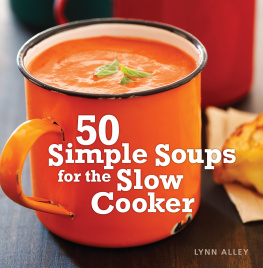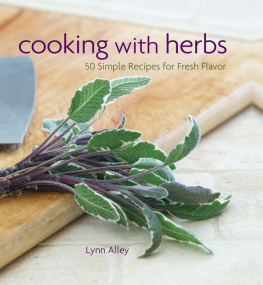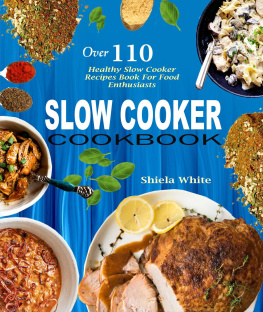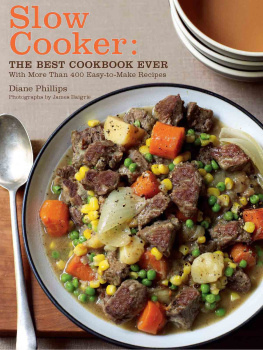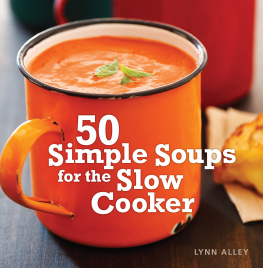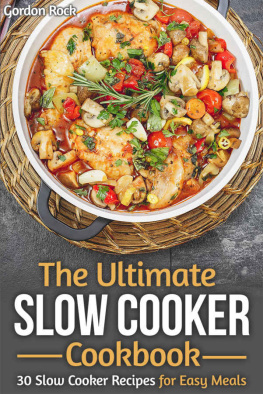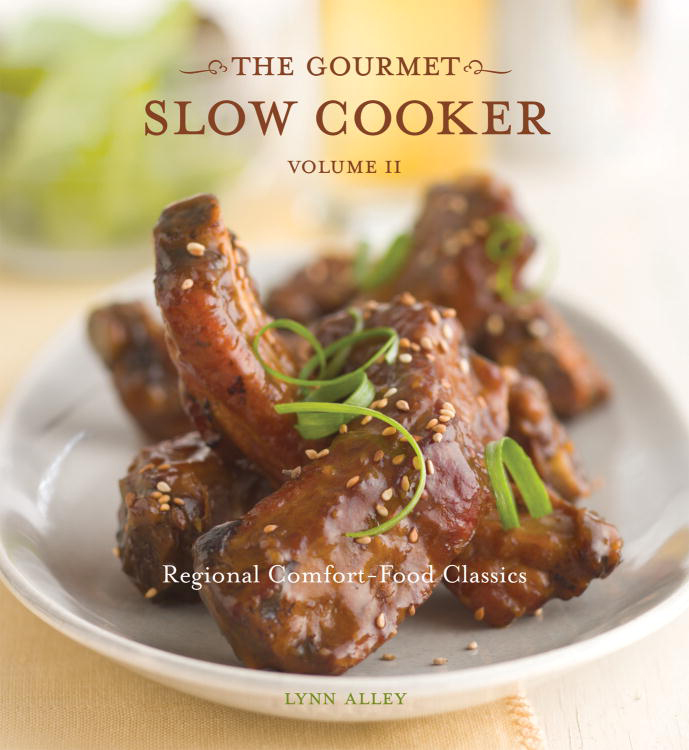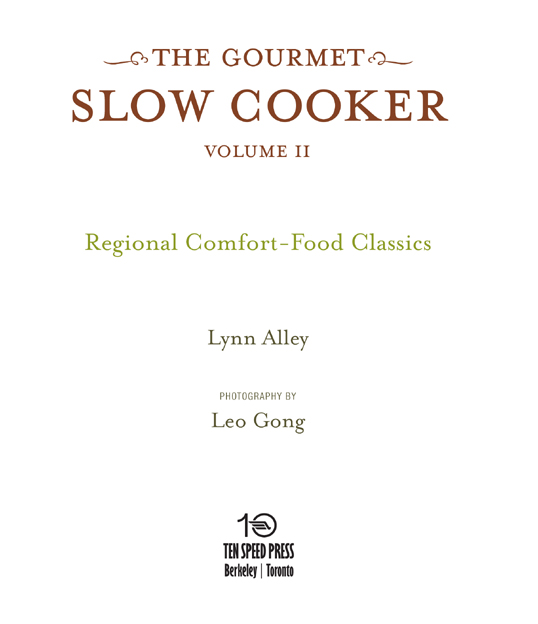Copyright 2006 by Lynn Alley
Photography copyright 2006 by Leo Gong
All rights reserved. No part of this book may be reproduced
in any form, except brief excerpts for the purpose of review,
without written permission of the publisher.

Ten Speed Press
PO Box 7123
Berkeley, California 94707
www.tenspeed.com
Distributed in Australia by Simon and Schuster Australia,
in Canada by Ten Speed Press Canada, in New Zealand by
Southern Publishers Group, in South Africa by Real Books, and
in the United Kingdom and Europe by Publishers Group UK.
Cover and text design by Catherine Jacobes
Food styling by Karen Shinto
Food styling assistance by Jeff Larsen
Prop styling by Natalie Hoelen
Photography assistance by Harumi Shimizu
Library of Congress Cataloging-in-Publication Data
Alley, Lynn.
The gourmet slow cooker volume II : regional comfort-food classics / Lynn Alley.
p. cm.
Includes index.
1. Casserole cookery. 2. Cookery, International. I. Title.
TX693.A446 2003
641.821dc21
2003006074
eISBN: 978-1-60774-127-5
v3.1
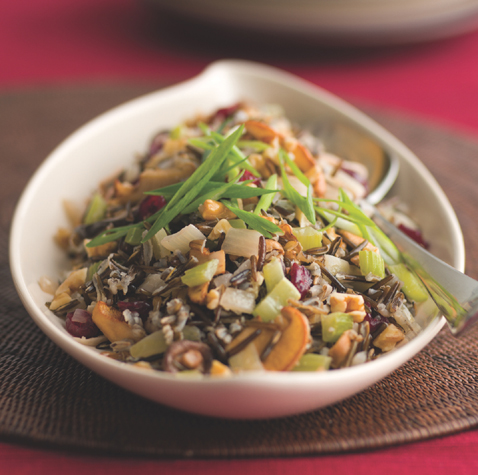
To M., as always, with love and gratitude
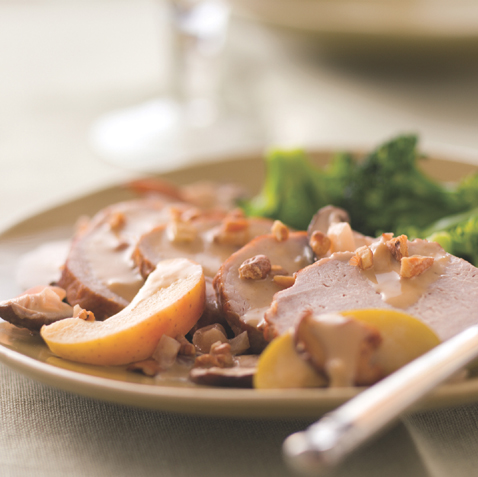
CONTENTS
Acknowledgments
Thanks to all my friends and neighbors who willingly and enthusiastically ate my food and gave me their critical feedback. Neighbors Helen Mildner, Ernie and Bob Tassoni, Marie Pike, and Rosella Heffner were ever at-the-ready with knife and fork. Gratitude also to the staff at the Chopra Center in Carlsbad (D. G., Monica, Anastacia, Leili, Caeli, Amanda, Ben, Mel, Tim, Travis, Hari, Asha, Max, Jennifer, Alisha, Lorri, Samara, Neil, and Brooke), for their enthusiastic appetites and candid, useful comments.
And, of course, Laddie, my Bouvier, faithfully performed his duties as curator of trash. He has been assisted, though decidedly more selectively, by Crystal, my eighteen-year-old Himalayan kitty.
To my friend, talented cook, and author Beth Hensperger, who is always ready to share advice, gossip, recipes, and immoral support. Special thanks to Brooke Myers for recipe testing and feedback.
To the crew at Ten Speed Press for total backup, as always. To Phil Wood, my constant supporter; Lorena Jones, who always has good ideas and ready comments; Lily Binns, my editor, for her patient guidance and work and her kindness, courtesy, and flexibility in accommodating my schedule; Mark Anderson, Dennis Hayes, and the sales crew for selling my books; Kristin Casemore in publicity; and never let me forget Kristine Standley, who cuts the checks and makes my day!
Thanks to the following company representatives who donated both equipment and advice to the effort: Melissa Palmer at All-Clad, Mary Rodgers at Cuisinart, and Heather Scherman at Porter Novelli for Braun.
And to Margaret Zink, for being my mom and friend.
Introduction
The recipes in this book, while far from exhaustive, have been chosen to celebrate some of the culinary, agricultural, and cultural influences I have most enjoyed as Ive lived and traveled all over this country. They are all inspired by regional heritages created by generations of immigrants and native peoples. The foods of the southwestern United States, for example, are richly layered blends of flavors that come from both European and Native American traditions, culminating in slow-cooked dishes like chili, posole, and a variety of stews. Through much experimentation, Ive learned that barbecue dishes from the South and Midwest work surprisingly well in a slow cooker, as do New England chowders and breads. The slow cooker is perfect for fruit preserves and dessertsthe longer and slower they cook, the sweeter they becomeand even high-end chocolate has its place over this kind of gentle heat. The slow cooker is clearly a bottomless pot when it comes to adapting favorite recipes to the lifestyle of the busy but discerning home cook.
We now live in a land of abundance such as has been experienced by few people in history, with access to a wide variety of organic produce, sustainably raised meat, and specialty products unlike anything weve experienced before. Good ingredients make a difference in both nutrition and flavor, and theres no reason we shouldnt use them in the slow cooker. Not all of the recipes found in this book are traditional, but they take inspiration, as did the recipes of our forefathers, from the wealth of good ingredients and the richness of local traditions found in all corners of our country. I hope that some among them will become traditions in your home.
Choosing a Slow Cooker
For my first book on slow cooking, The Gourmet Slow Cooker, I tested all the recipes in machines I could then afford: the $19.99 specials from Home Depot and Target. I figured one slow cooker was as good as the next.
I had two or three different brands in two or three different sizes. Id test one recipe in the Hamilton Beach, another in the General Electric, and a third in the Rival. It never occurred to me to test one recipe in three different brands of slow cooker.
Not, that is, until a reader wrote in saying that she followed my instructions for cooking beef burgundy to the letter, but that the liquid was completely gone by the specified end time. My editor asked me to retest the recipe to see if any change needed to be made in the amount of liquid called for. I tested it again and found that the suggested cooking time and the amount of liquid worked perfectly. I wondered what had gone wrong, and then it began to dawn on me that the fault might lie with the slow cooker.
Different slow cookers cook at different temperatures. One manufacturers low temperature may not be the same as anothers. In general, the low setting should fall between 180F and 200F, and a high setting generally cooks around a hundred degrees higher. Cooking temperatures will vary depending on the size of the cooker, the altitude of the kitchen, the density and temperature of the food before it is placed in the crock, and how full the crock is filled. Knowing your slow cookers range in temperature is useful when cooking large pieces of meat, such as a pork loin (which should hit 165F) or turkey breast (175F), and other meats which must be cooked to a specific temperature in order to ensure safety. If you want to assess your cooking temperatures, use a kitchen thermometer and insert it into the middle of the contents of the crock, without letting it touch the bottom, or in the case of meat, the bone, two or three hours into the cooking time. With meat, the thermometer should be inserted into the center.
So the one caveat I dish out with this book is get to know your own slow cooker and carefully observe how it cooks. Cooking times may vary according to manufacturer, model, and even, I am told, the amount of power coming into your house at any given time or in any given area.
You may also find that the less expensive cookers have hot spots around the edges, while every effort has been made to stabilize the heat in the more expensive models. This may not matter much with the majority of recipes, but it is still a good idea to give the contents of your cooker a stir now and again. When baking cakes in the cooker, you may wish to carefully lift out the insert with potholders, turn it around, and then reinsert it for more even baking. You can certainly prepare your meals with an inexpensive slow cooker; I have cooked many good ones in mine. Just be aware of its possible shortcomings and idiosyncrasies. Watch it closely at first until you have a good sense of its timing.


